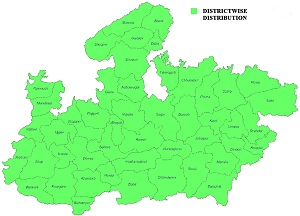| Xenochrophis piscator(Schneider, 1799) |
| Checkered Keelback Water Snake |
 |
|
Diagnostic characters:
|
| A medium-sized snake with a stout heavy body, a pointed head and a rather long tail. The scales are strongly keeled and over all. Eyes has round pupil. Two bold black streaks-one below, the other from eye to angle of mouth. Dorsum glossy olive-green, olive-brown, yellow, brown, grey or black, usually with a checkered body pattern. SVL: 1200mm. |
| Habit and Habitat: |
| Active by day and night. Found in and around fresh water bodies and paddy fields and hunt along the edges of ponds and rice-fields |
| Diet: |
| Young feed on frog eggs, tadpoles, and water insects; older snakes eat fish, frogs, occasionally rodents and birds. |
| Legal Protection: |
| WL (P) A, 1972-Schedule II |
| Conservation status and Threats: |
| Not accessed. Abundant. No serious threat observed. |
 |
Distribution: Madhya Pradesh: Throughout. Elsewhere in India: The Whole of India |
|